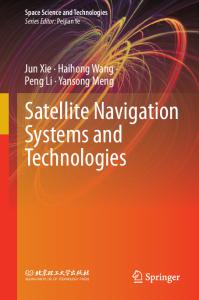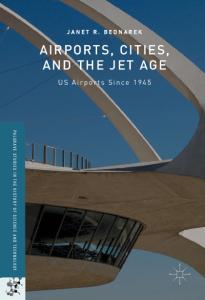Radio Navigation Systems for Airports and Airways
This book highlights the design principles of ground based radio-navigation systems used in solving navigation tasks in the airfield and on air routes. Mathematical correlations are illustrated that describe its operation, peculiarities of disposition, ma
- PDF / 12,731,592 Bytes
- 239 Pages / 453.544 x 683.151 pts Page_size
- 64 Downloads / 370 Views
Oleg Nicolaevich Skrypnik
Radio Navigation Systems for Airports and Airways
Springer Aerospace Technology
The Springer Aerospace Technology series is devoted to the technology of aircraft and spacecraft including design, construction, control and the science. The books present the fundamentals and applications in all fields related to aerospace engineering. The topics include aircraft, missiles, space vehicles, aircraft engines, propulsion units and related subjects.
More information about this series at http://www.springer.com/series/8613
Oleg Nicolaevich Skrypnik
Radio Navigation Systems for Airports and Airways
123
Oleg Nicolaevich Skrypnik Aircraft Radio Electronic Equipment Moscow State Technical University of Civil Aviation Irkutsk, Russia
ISSN 1869-1730 ISSN 1869-1749 (electronic) Springer Aerospace Technology ISBN 978-981-13-7200-1 ISBN 978-981-13-7201-8 (eBook) https://doi.org/10.1007/978-981-13-7201-8 Library of Congress Control Number: 2019934521 © Springer Nature Singapore Pte Ltd. 2019 This work is subject to copyright. All rights are reserved by the Publisher, whether the whole or part of the material is concerned, specifically the rights of translation, reprinting, reuse of illustrations, recitation, broadcasting, reproduction on microfilms or in any other physical way, and transmission or information storage and retrieval, electronic adaptation, computer software, or by similar or dissimilar methodology now known or hereafter developed. The use of general descriptive names, registered names, trademarks, service marks, etc. in this publication does not imply, even in the absence of a specific statement, that such names are exempt from the relevant protective laws and regulations and therefore free for general use. The publisher, the authors and the editors are safe to assume that the advice and information in this book are believed to be true and accurate at the date of publication. Neither the publisher nor the authors or the editors give a warranty, expressed or implied, with respect to the material contained herein or for any errors or omissions that may have been made. The publisher remains neutral with regard to jurisdictional claims in published maps and institutional affiliations. This Springer imprint is published by the registered company Springer Nature Singapore Pte Ltd. The registered company address is: 152 Beach Road, #21-01/04 Gateway East, Singapore 189721, Singapore
Preface
Efficiency of the air transport utilization depends significantly on the efficiency of air traffic control (ATC) system performance and is characterized by parameters such as safety, regularity, and operation economy of air traffic. The basis of ATC system is airfield network that includes airfields of different kinds and purposes, adherent airspace areas as well as air paths. On airfields and adherent airspace areas, most complicated and challenging ATC tasks are solved such as aircraft’s takeoff and landing, on the air paths—flight navigation tasks. Thereat, on all flight stages, an aircraft must be provided
Data Loading...










